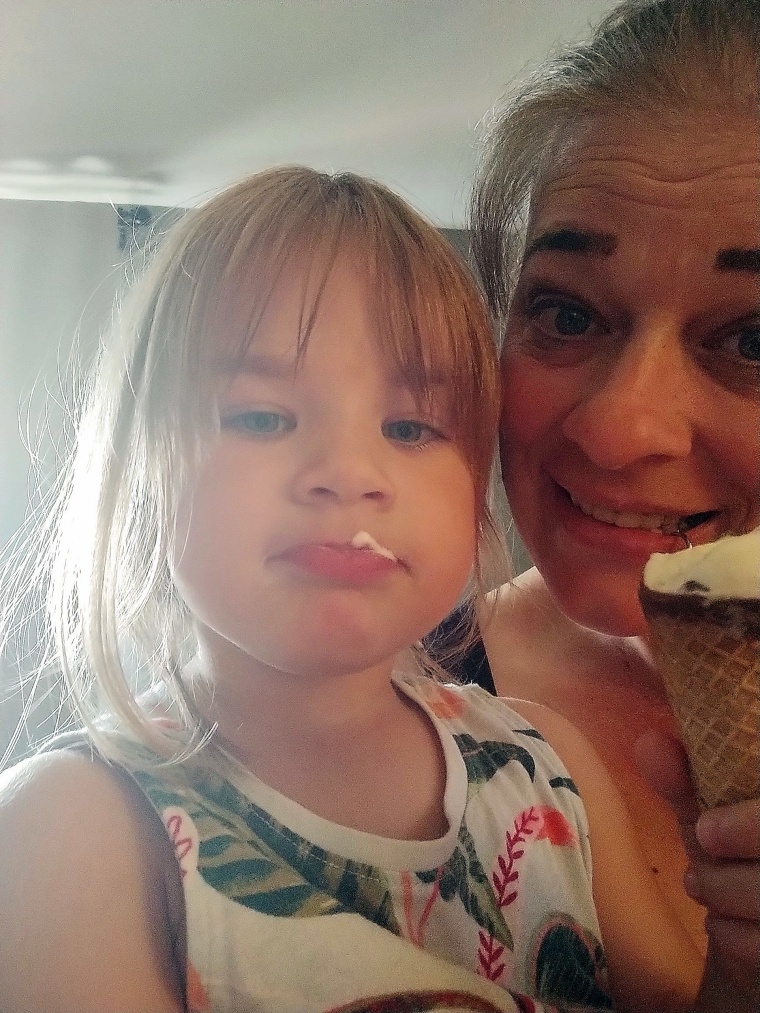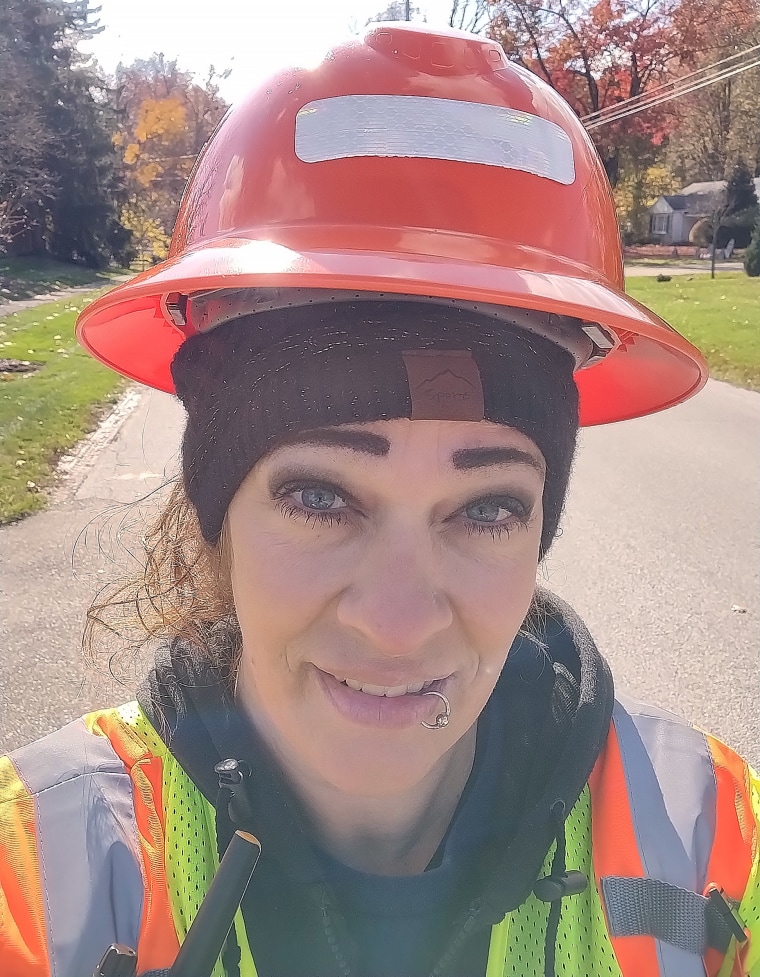In early 2024, Melissa Sanders experienced an almost three-month long period. At 44 years old, she thought perimenopause, when the body starts to transition to menopause, was causing her heavy menstrual bleeding.
“Everybody was telling me I’m going through perimenopause,” the now-46-year-old from Valley City, Ohio, tells TODAY.com. “I didn’t make a big deal about it. I just put up with it for another two months. But then I started getting contractions.”
She visited her doctor and eventually learned that she had Stage 3 cervical cancer.
“I was sad,” Sanders says. “But I didn’t give up.”
Non-Stop Bleeding With Pain
When the constant bleeding began, Sanders listened to others who said perimenopause was likely the cause of her irregular periods.
“My mom was like, ‘Melissa, all of us go through it,’” Sanders recalls. “I was like, ‘I don’t know mom because when you were going through this, I don’t remember you being in this much pain.’ And then I was like, ‘There is no way this is just perimenopause.’”

After several months of heavy, non-stop bleeding, she began experiencing pain that felt like the contractions she remembered from giving birth to her three children.
“It got to where I couldn’t stand at work,” she says. “I was holding my stomach to walk. It felt like my (organs) were going to fall out.”
In March 2024, she made an appointment to get a Pap smear. She realized that it had been 22 years since her last one.
“I never worried about me,” Sanders says. “I was a single mom with three kids, and I worked. So, they did their routines, doctors, dentists, but I just never had the time.”
Soon after her Pap smear, her doctor scheduled a biopsy. But she faced an unexpected complication.
“They stopped my biopsy within two minutes of starting it,” she says. “I had cancerous skin falling off my cervix, just falling off, and there was ooze.”
The doctor could tell Sanders had a mass by feeling it, and an MRI and PET scan revealed that she had Stage 3 cervical cancer.
Doctors recommended chemotherapy and radiation to treat it. For about six months, she underwent treatment. Undergoing grueling therapies took a toll on her health.
“My son pretty much had to carry (me) around at my last radiation,” Sanders says. “I was really, really weak.”
In September 2024, she finished treatment. While she gradually feels better, Sanders still notices she struggles with weakness and ongoing pain.
“I can’t stand … as long as I was able to before,” she says. “My legs are weak, my hips. That’s just from my waist down. It’s like I’ve got to gain all my muscles back.”
She’s in physical therapy to try to improve her strength. Every three months, she has bloodwork done, and she undergoes scans to make sure she’s still cancer free. Since last year, her scans have been clear. While she did not undergo any surgery, her cancer treatments have put her in menopause.
“My doctor said I won’t have a period for the rest of my life,” she says. “I will have hot flashes.”
Cervical Cancer
Cervical cancer is usually caused by an infection with the human papillomavirus (HPV), which infects about 80% of people at some point in their lives, according to MD Anderson Cancer Center. While many people clear the virus from their system, some are not able to, and the virus lingers. About 12 types of HPV are considered high risk and can lead to cervical cancer.
“One of my colleagues called it the common cold for the vagina,” Dr. Sudha Amarnath, a radiology oncologist at the Cleveland Clinic, tells TODAY.com.

While Pap smears and HPV screening can often detect precancerous cells or high-risk HPV infections, many women, like Sanders, do not realize they need to undergo regular screening.
“This is something that we see really frequently. A lot of women stop taking care of themselves once they stop having children because they’re so focused on their kids and other people in their lives,” Amarnath says. “We’ve all been exposed to HPV, and so making sure that it’s not causing any precancerous and cancer changes … in our cervix is really important.”
A Pap smear — where doctors take a sample of cervical cells from outside and inside the cervix — is one of the best ways to screen for cervical cancer. They are recommended every three years between the ages of 21-65, per the National Cancer Institute.
“The goal is to find any changes in those cells … so you can remove them before they turn into cancer,” Amarnath says.
Signs of cervical cancer include:
For early-stage cervical cancer, doctors can sometimes remove the affected part of the cervix. But if the tumor is too big or located too deep within the body, doctors might use chemotherapy and radiation instead.
The good news about cervical cancer is that it can be avoided. The HPV vaccine is 97% effective at preventing HPV-related cancers.
“We’d like to scream it from a rooftop — everyone should get the HPV vaccine,” Amarnath says. “It protects against several … strains of high-risk HPV, so it can protect against cervical cancer, vaginal cancer, anal cancer, head and neck cancers for both boys and girls.”
‘Don’t Ignore It’
When Sanders started treatment for cervical cancer, she had to stop watching her granddaughter, Gracelynn, because Gracelynn’s mom wanted Sanders to have enough time to rest and recover. Not seeing her granddaughter felt tough because it dramatically changed Sanders’ daily schedule.
“She was with me every day,” she says. “I had her all the time.”
During her treatment, Sanders spent a month away from home. Being away from her family and grappling with a cancer diagnosis felt isolating and depressing.
“It was sad,” she says. “I wanted everything to be normal.”
Since treatment, Sanders started prioritizing her health so she can see Gracelynn grow up.
“I got to put me first,” she says. “I try to do everything healthier. I just walked 3 miles the other day with my daughter and grandbaby.”
Sanders says she hopes that others learn from her experience and do not neglect their cancer screenings.
“A lot of people have that mindset that life is too busy. But it really isn’t,” she says. “It’s very important to keep up with your Pap smears, mammograms. Don’t ignore it.”
Source link


